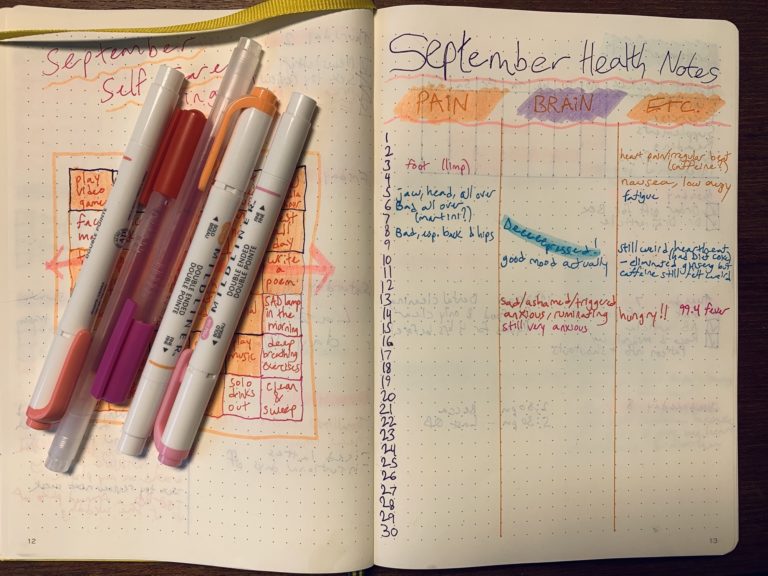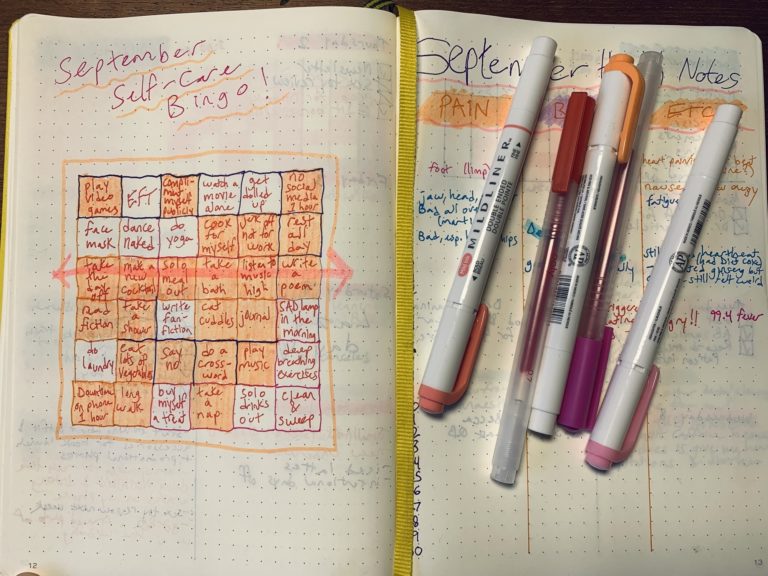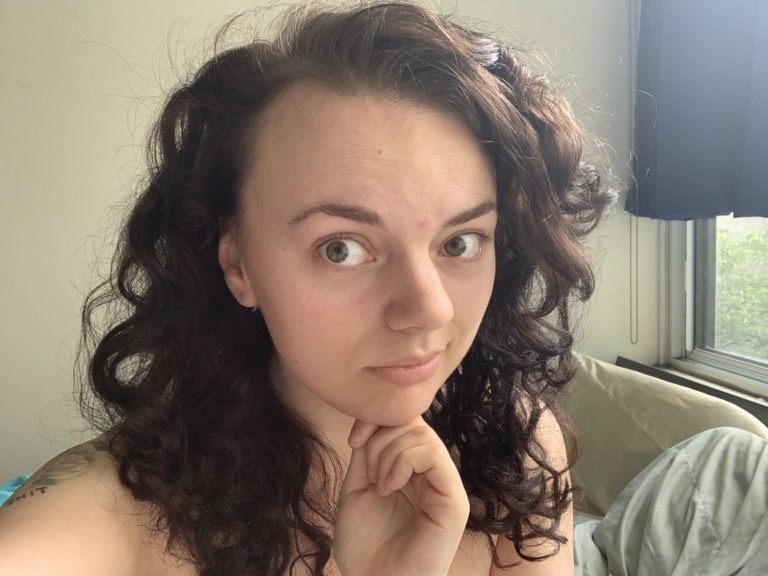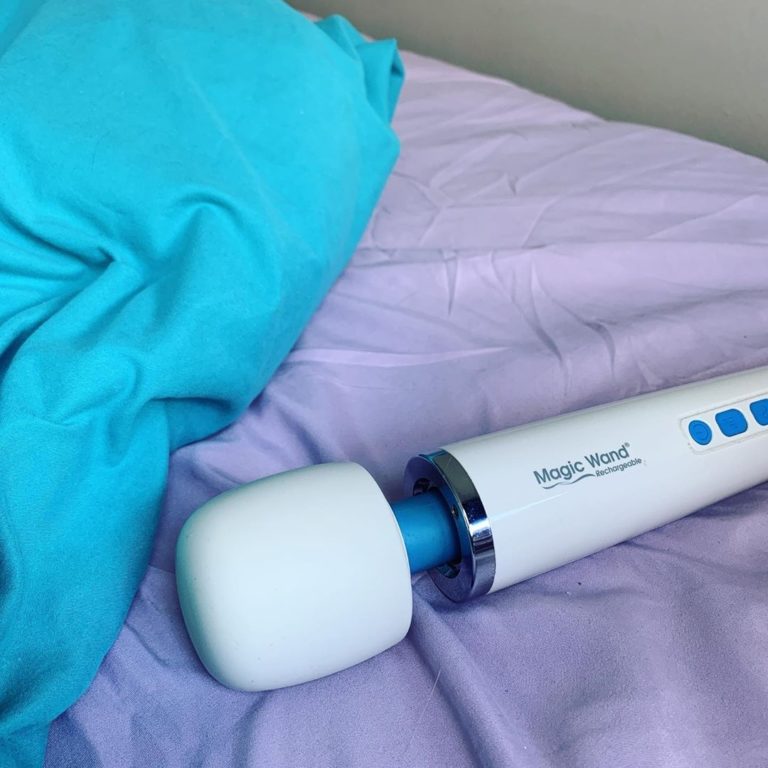
I’ve long admired bullet journaling as a practice – like the art journaling and planner collage I did as a teen, it’s a way of making the everyday into something visually appealing and memorable. Life itself feels more beautiful, I find, when you document it in a beautiful way.
I was recently hit by a deep and recurring urge to return to this style of creative documentation. But, in particular, I’d been wanting to find a more concrete way of tracking my chronic illness symptoms. In seeking a diagnosis (which I’d been doing for over six years with no luck thus far), it can be helpful to have cold hard numbers to show to a doctor, so they can get a sense of how serious and ongoing the problem is. I’d experimented with symptom-tracking apps, spreadsheets, and digital notes, but had found it difficult to use these consistently enough to gather any real data. It was time for a physical solution.
While I no longer do much writing with an actual pen on actual paper, I’ve known for a long time that it can help unlock things in the mind that would’ve remained unexplored if you’d stayed in a digital medium. There are numerous scientists who have opinions on why this is; there are also cultural commentators, like Tom Hanks and John Mayer in the documentary California Typewriter, with their own views on why physically scrawling or hammering out a piece of writing can feel better and produce better results than digital alternatives. I doubt this is true for everyone, but it’s certainly true for me. All attempts I’ve made to journal on a computer, for example, left me feeling unable to dive as deep emotionally as I tend to when I let my thoughts meander through a notebook on my lap.
So I figured a similar principle might apply for tracking my various symptoms, remedies, ups and downs. I bought a bright yellow Leuchtturm1917 dotted journal (widely considered the best choice for bullet journaling aficionados) and some colored pens and highlighters, and got to work building my setup.
I should say upfront, what I’m doing is a very loose interpretation of what “bullet journaling” actually means. I’ve also pulled a number of ideas from various sources I found through Pinterest. Let’s talk about 3 of the main tools I use in my journal to help track and assuage my chronic illness symptoms:
Habit tracker on weekly spread
Lots of people do a “weekly spread” in their bullet journals, where they lay out the days of the week like a traditional planner, and write their commitments and appointments on the corresponding days. I got inspired by some of the journalers I saw online who were doing habit trackers as part of their weekly spread, so I decided to start doing my own.
Basically this is just a table with a list of habits I want to instill on the Y axis and the days of the week on the X axis. When I successfully do one of the things on my habit list, I fill in the square for that habit on that day. Pretty simple.
However, I continue to find it astonishing how motivating this practice is for me. The satisfaction of coloring in a part of the table and seeing the page get gradually more colorful… The ability to see, at a glance, whether I was good or less good at self-care during a particular week… The ability to triumphantly text my partner a photo of the days when I complete all of my habits… It’s all lovely.
I love that I can change up which habits I’m prioritizing from week to week; for example, if I’m having an active psoriasis flare-up, I’ll add “apply psoriasis lotion” to my habits list. The habits on my current page are: sunshine (get outside/feel the sun on my face), exercise, supplements, reading (at least 20+ minutes; must be a book, not an article or blog post), brush & floss, and intentional joy. That last one is the vaguest, but basically I’d define it as taking some time out of my day to deliberately experience something that makes me happy, whether that’s laughing my ass off at a Netflix comedy special, having a decadent jerk-off session in the afternoon, or cuddling my roommate’s cats while telling them how pretty they are.
I’ve genuinely gotten much better about sticking to these habits since I started tracking them in a journal. Would recommend!

Monthly health notes page
At the start of every month, I divide one page into 3 columns – pain, brain, and miscellaneous – and number the days of the month on the left side of the page. Then I make notes throughout the month about which symptoms I noticed and when.
This is fantastically useful for so many reasons. It gives me a record that a doctor might find useful. It gives me a clearer picture of how my menstrual cycle affects my symptoms. I can cross-reference this page with my habit tracker to see how various habits affect the way I feel.
In fact, I recently did exactly that, when I started having scary heart palpitations a couple days a week or so. I looked at my health notes and my habit tracker and discovered that the days my heart went haywire were all days that I had ingested both caffeine and a red panax ginseng supplement I’d recently started on. I did some research and found out that ginseng is known to increase heart rate for some folks – and of course, so is caffeine. I also found out through research that the antidepressant I’m on, Wellbutrin, increases some users’ sensitivity to caffeine. With all of this information available to me, I was able to make the decision to stop taking the ginseng supplement and limit my caffeine intake going forward. My heart palpitations haven’t returned since I did that.
I also like that the health tracker page gives me a place to brain-dump any random symptoms I might be experiencing that my hypochondriac brain thinks might be perilous. Looking back on this page helps me see that most of the stuff I was worried about turned out to be nothing (or, sometimes, turned out to be anxiety-related).

Self-care bingo
I read about this in a bullet journaling blog post and loved the idea immediately. Self-care is definitely an area where I need as much help as I can get, being a depressed and anxious workaholic prone to destructively high expectations for myself. I liked the thought of “gamifying” my self-care to make me more motivated to actually do it.
At the start of each month, I draw out a 6×6 bingo board and fill in each square with something specific that I want to do to reduce my stress level and increase my joy quotient. Some of the things repeat from month to month because they work consistently for me – like “take a bath” or “no social media for 3 hours” – while some get changed up.
This spread gives me permission to be nice to myself; self-care feels “productive” because I know I get to fill in a little square on my bingo board after I do it. As a person who has often beat herself up for reading or playing video games because those activities “weren’t productive,” I know that I struggle to do things just for the pleasure of doing them; there’s almost always some guilt and/or shame attached to that for me. I’m working on it in therapy (among other things), but until I figure out a better way to deal with that problem, this self-care bingo thing seems like a great stopgap.
Have you ever used a bullet journal to track or mitigate your chronic illness symptoms?


